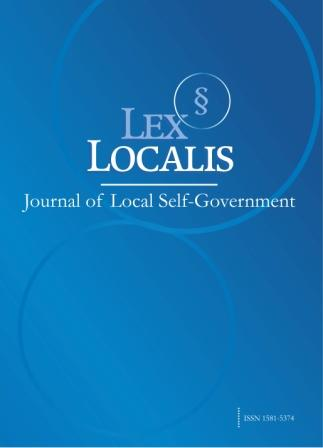Economic Data Analysis: A Comprehensive Examination of Market Trends and Predictive Modeling
DOI:
https://doi.org/10.52152/800042Keywords:
Economic data analysis, market trends, predictive modeling, price competition, consumer welfare, strategic decision-making.Abstract
The present paper focuses on the presentation of economic data analysis, stressing the problem of market analysis and prediction problem. Economic data analysis is the process through which various economic factors of production, or data obtained from various sources, are analyzed to understand past and present economic conditions necessary for identifying patterns and making correct forecasts regarding the future conditions of the market. Thus, combining the ideas embedded in V. Valli's consideration of the American economy and investigating the experiences Alvisi and Carbonara offer in their work regarding price competition and welfare enables us to discuss historical and modern approaches to the study of economic processes. While reading through Valli's work, it is possible to analyze some significant historical approaches toward the economy of America and worth noticing factors. Alvisi and Carbonara's study focuses on the impacts of horizontal product portfolio expansion in a duopoly and, as such, offers agency into price competition and consumer surplus. These are scholarships that this paper harmonizes to affect the market analysis and gain more knowledge in the market patterns and behavioural analysis using statistical models. The results compare economic data analysis and prediction tasks in decision-making and provide methodological significance for economists, policy-makers, and managers. Understanding the economic status trends plays a critical role. The paper will contribute to the discussions on understanding today's economic realities and defend data as critical tools in managing uncertainties to enhance stability and development.
References
Abosedra, S., Arayssi, M., Sita, B. B., & Mutshinda, C. (2020). Exploring GDP growth volatility spillovers across countries. Economic modelling, 89, 577-589. https://doi.org/10.1016/j.econmod.2019.11.015
Akram, T. (2022). A simple model of the long-term interest rate. Journal of Post Keynesian Economics, 45(1), 130-144. https://doi.org/10.1080/01603477.2021.1878906
Alvisi, M., & Carbonara, E. (2020). Cocktails done right: Price competition and welfare when substitutes become complements. Journal of Economics, 131(1), 1-38. https://doi.org/10.1007/s00712-020-00690-z
Asriyan, V., Laeven, L., Martin, A., Van der Ghote, A., & Vanasco, V. (2024). Falling interest rates and credit reallocation: Lessons from general equilibrium. Review of Economic Studies, rdae065.https://doi.org/10.1093/restud/rdae065
Bhar, R., & Malliaris, A. G. (2021). Modeling US monetary policy during the global financial crisis and lessons for Covid-19. Journal of policy modeling, 43(1), 15-33. https://doi.org/10.1016/j.jpolmod.2020.07.001
Chan, Y. T., & Dong, Y. (2022). How does oil price volatility affect unemployment rates? A dynamic stochastic general equilibrium model. Economic Modelling, 114, 105935. https://doi.org/10.1016/j.econmod.2022.105935
Charlton, D., & Castillo, M. (2021). Potential impacts of a pandemic on the US farm labor market. Applied Economic Perspectives and Policy, 43(1), 39-57. https://doi.org/10.1002/aepp.13105
Chin, W., Cheah, J. H., Liu, Y., Ting, H., Lim, X. J., & Cham, T. H. (2020). Demystifying the role of causal-predictive modeling using partial least squares structural equation modeling in information systems research. Industrial Management & Data Systems, 120(12), 2161-2209. https://doi.org/10.1108/IMDS-10-2019-0529
Economou, P., Batsidis, A., & Kounetas, K. (2021). Evaluation of the OECD’s prediction algorithm for the annual GDP growth rate. Communications in Statistics: Case Studies, Data Analysis and Applications, 7(1), 67-87. https://doi.org/10.1080/23737484.2020.1805818
Ghasemaghaei, M., & Calic, G. (2020). Assessing the impact of big data on firm innovation performance: Big data is not always better data. Journal of business research, 108, 147-162. https://doi.org/10.1016/j.jbusres.2019.09.062
Girdzijauskas, S., Streimikiene, D., Griesiene, I., Mikalauskiene, A., & Kyriakopoulos, G. L. (2022). New approach to inflation phenomena to ensure sustainable economic growth. Sustainability, 14(1), 518. https://doi.org/10.3390/su14010518
Gopinath, G. (2020). The great lockdown: Worst economic downturn since the great depression. https://meetings.imf.org/en/IMF/Home/Blogs/Articles/2020/04/14/blog-weo-the-great-lockdown-worst-economic-downturn-since-the-great-depression
Islami, X., Mustafa, N., & Topuzovska Latkovikj, M. (2020). Linking Porter’s generic strategies to firm performance. Future Business Journal, 6, 1-15. https://doi.org/10.1186/s43093-020-0009-1
Katris, C. (2020). Prediction of unemployment rates with time series and machine learning techniques. Computational Economics, 55(2), 673-706. https://doi.org/10.1007/s10614-019-09908-9
Lim, B., & Zohren, S. (2021). Time-series forecasting with deep learning: a survey. Philosophical Transactions of the Royal Society A, 379(2194), 20200209. https://doi.org/10.1098/rsta.2020.0209
Mityakov, S. N., Mityakov, E. S., Ladynin, A. I., & Nazarova, E. A. (2023). Country economic security monitoring rapid indicators system. Economies, 11(8), 208. https://doi.org/10.3390/economies11080208
Onifade, S. T., Çevik, S., Erdoğan, S., Asongu, S., & Bekun, F. V. (2020). An empirical retrospect of the impacts of government expenditures on economic growth: New evidence from the Nigerian economy. Journal of Economic Structures, 9(1), 6. https://doi.org/10.1186/s40008-020-0186-7
Picault, M., Pinter, J., & Renault, T. (2022). Media sentiment on monetary policy: Determinants and relevance for inflation expectations. Journal of International Money and Finance, 124, 102626. https://doi.org/10.1016/j.jimonfin.2022.102626
Saqr, M., Beck, E., & López-Pernas, S. (2024). Psychological networks: A modern approach to analysis of learning and complex learning processes. In Learning analytics methods and tutorials: A practical guide using R (pp. 639-671). Cham: Springer Nature Switzerland. https://doi.org/10.1007/978-3-031-54464-4_19
Saura, J. R. (2021). Using data sciences in digital marketing: Framework, methods, and performance metrics. Journal of Innovation & Knowledge, 6(2), 92-102. https://doi.org/10.1016/j.jik.2020.08.001
Tsai, S. C., Chen, C. H., Shiao, Y. T., Ciou, J. S., & Wu, T. N. (2020). Precision education with statistical learning and deep learning: A case study in Taiwan. International Journal of Educational Technology in Higher Education, 17, 1-13. https://doi.org/10.1186/s41239-020-00186-2
Valli, V. (2018). The American Economy from Roosevelt to Trump. Springer. https://books.google.co.ke/books?hl=en&lr=&id=PPh6DwAAQBAJ&oi=fnd&pg=PR5&dq=V.+Valli,+The+American+Economy+from+Roosevelt+to+Trump+227+pp.,+Palgrave+Macmillan,+Basingstoke+(Hampshire),+2018,+29%E2%82%AC&ots=Sl670POBh7&sig=DfHDWloe6MXE2Y-NOD1dB0bxqFY&redir_esc=y#v=onepage&q&f=false
Wadhwani, R. D., Kirsch, D., Welter, F., Gartner, W. B., & Jones, G. G. (2020). Context, time, and change: Historical approaches to entrepreneurship research. Strategic Entrepreneurship Journal, 14(1), 3-19. https://doi.org/10.1002/sej.1346
Washington, S., Karlaftis, M. G., Mannering, F., & Anastasopoulos, P. (2020). Statistical and econometric methods for transportation data analysis. Chapman and Hall/CRC. https://doi.org/10.1201/9780429244018
Zakhidov, G. (2024). Economic indicators: tools for analyzing market trends and predicting future performance. International Multidisciplinary Journal of Universal Scientific Prospectives, 2(3),23-29.https://www.researchgate.net/profile/Gofurjon-Zaxidov/publication/380519295_ECONOMIC_INDICATORS_TOOLS_FOR_ANALYZING_MARKET_TRENDS_AND_PREDICTING_FUTURE_PERFORMANCE/links/664092ad08aa54017a036e69/ECONOMIC-INDICATORS-TOOLS-FOR-ANALYZING-MARKET-TRENDS-AND-PREDICTING-FUTURE-PERFORMANCE.pdf
Downloads
Published
Versions
- 2025-08-11 (2)
- 2025-11-07 (1)
Issue
Section
License
Copyright (c) 2025 Lex localis - Journal of Local Self-Government

This work is licensed under a Creative Commons Attribution-NonCommercial-NoDerivatives 4.0 International License.








